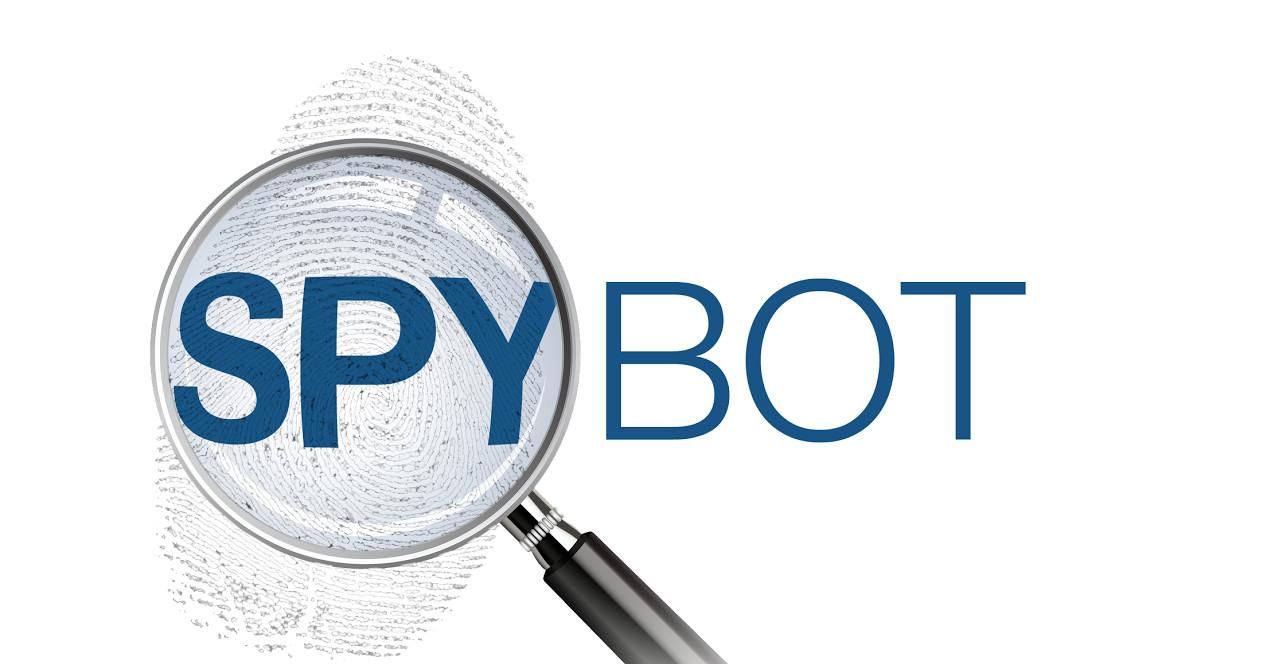Spybot search and destroy takes center stage as a potent force in modern technological warfare. These autonomous agents, capable of infiltration and disruption, represent a new frontier in espionage and security. This exploration delves into the world of spybots, examining their capabilities, motivations, and the ethical dilemmas they present.
Table of Contents
From the covert operations of early spybots to the advanced artificial intelligence driving modern systems, this exploration reveals the complex interplay between technology, strategy, and human control. The “search and destroy” mission, a core function of many spybots, highlights the critical need for ethical considerations and responsible development. We will explore the technologies behind these systems, the potential risks and benefits of AI integration, and the legal and ethical frameworks governing their use.
Legal and Ethical Implications

Spybots, with their potential to access and manipulate information without consent, raise significant legal and ethical concerns. The ability to remotely control devices, collect personal data, and interfere with private communications poses serious risks to individual privacy and security.
Legal Frameworks
The legal landscape surrounding spybots is complex and evolving. While many countries have laws addressing data protection, privacy, and cybercrime, the specific regulations governing the use of spybots are often ambiguous or incomplete. This ambiguity stems from the rapid pace of technological advancements and the difficulty in defining and regulating the use of these tools.
- Data Protection Laws: Laws such as the General Data Protection Regulation (GDPR) in the European Union and the California Consumer Privacy Act (CCPA) in the United States aim to protect personal data and grant individuals control over their information. However, the application of these laws to spybots is still being debated, particularly when it comes to the collection and use of data without explicit consent.
- Cybercrime Laws: Laws targeting cybercrime, such as the Computer Fraud and Abuse Act (CFAA) in the United States, may address certain aspects of spybot use, such as unauthorized access to computer systems or the theft of data. However, these laws often focus on malicious intent, making it difficult to prosecute the use of spybots for non-malicious purposes.
- International Cooperation: The global nature of spybot technology necessitates international cooperation in regulating their use. Efforts like the Budapest Convention on Cybercrime aim to establish common legal frameworks and facilitate international collaboration in combating cybercrime, including the misuse of spybots.
Ethical Considerations
Beyond legal frameworks, the ethical implications of spybot use are profound. The potential for misuse raises serious concerns about privacy violations, manipulation, and the erosion of trust in digital spaces.
- Privacy and Surveillance: Spybots can be used to monitor individuals’ online activities, collect personal data, and track their movements without their knowledge or consent. This raises serious concerns about privacy violations and the potential for abuse.
- Manipulation and Deception: Spybots can be used to manipulate or deceive individuals by altering information, spreading misinformation, or influencing their behavior. This can have significant consequences for individual autonomy and democratic processes.
- Erosion of Trust: The widespread use of spybots can erode trust in digital technologies and institutions. If individuals believe their devices and communications are not secure, they may be less likely to engage in online activities or share personal information.
Consequences of Violating Legal and Ethical Frameworks, Spybot search and destroy
The consequences of violating legal and ethical frameworks governing spybot use can be severe, including:
- Legal Penalties: Individuals or organizations that misuse spybots can face criminal charges, fines, and other legal penalties.
- Reputational Damage: Violating legal and ethical standards can damage an organization’s reputation, leading to loss of trust and customers.
- Loss of Access to Data: Individuals or organizations found to be using spybots illegally may be denied access to certain data or services.
International Cooperation in Regulating Spybot Technologies
The global nature of spybot technology necessitates international cooperation in regulating their use. This includes:
- Harmonizing Legal Frameworks: Countries should work together to develop and harmonize legal frameworks that address the use of spybots in a consistent and effective manner.
- Sharing Information and Best Practices: Governments, law enforcement agencies, and cybersecurity experts should share information and best practices on the use and detection of spybots.
- Promoting Ethical Use: International organizations and governments should promote ethical guidelines and best practices for the development and use of spybot technologies.
The Counter-Spybot Landscape

The counter-spybot landscape is a constantly evolving battleground, as defenders seek to outmaneuver the increasingly sophisticated tactics of spybots. Counter-spybot measures are essential to protect individuals, organizations, and critical infrastructure from the potential harm caused by these malicious programs.
Methods and Technologies for Countering Spybots
Counter-spybot measures encompass a range of methods and technologies designed to detect, prevent, and mitigate the threats posed by spybots. These strategies can be broadly categorized into:
- Detection: Identifying the presence of spybots through various techniques, such as signature-based detection, anomaly detection, and behavioral analysis.
- Prevention: Implementing measures to block or hinder the entry and execution of spybots, including firewalls, intrusion detection systems (IDS), and anti-spybot software.
- Mitigation: Reducing the impact of spybot attacks by isolating infected systems, removing malicious code, and restoring compromised data.
Effectiveness of Counter-Spybot Strategies
The effectiveness of counter-spybot strategies depends on several factors, including the sophistication of the spybot, the level of security awareness, and the resources available for defense.
- Signature-based detection: This method relies on identifying known patterns or signatures associated with spybots. However, its effectiveness is limited against new or unknown spybots that lack established signatures.
- Anomaly detection: This technique focuses on identifying unusual behavior patterns that deviate from normal system activity. It can be effective against novel spybots but may generate false positives.
- Behavioral analysis: This approach analyzes the actions and interactions of processes and applications to identify suspicious activities indicative of spybot behavior. Behavioral analysis can be more effective against sophisticated spybots that employ evasive tactics.
The Evolving Arms Race
The battle between spybots and counter-spybot measures is an ongoing arms race. As spybots become more sophisticated and elusive, defenders need to adapt their strategies and technologies to stay ahead.
- Advanced Spybots: Spybots are increasingly using techniques like polymorphism, code obfuscation, and stealthy communication channels to evade detection and removal.
- Countermeasures: Defenders are employing advanced threat intelligence, machine learning, and automated threat detection systems to counter these evolving threats.
- Proactive Defense: The focus is shifting towards proactive defense strategies that anticipate and prevent attacks before they occur. This involves implementing strong security measures, conducting regular security audits, and educating users about spybot threats.
Final Thoughts: Spybot Search And Destroy

As we navigate the evolving landscape of spybot technology, the need for responsible development and ethical considerations becomes paramount. The future of spybots holds both immense potential and significant risks. The ongoing arms race between spybots and counter-spybot measures underscores the importance of international cooperation and robust legal frameworks to ensure that these technologies are used for good and not for malicious purposes.
Spybot Search & Destroy is a popular anti-spyware program that helps keep your computer safe from malicious software. While it works well on various operating systems, it’s particularly useful for windows operating system users, as they often face a higher risk of malware infections.
Spybot Search & Destroy can detect and remove a wide range of threats, including spyware, adware, and Trojans, making it a valuable tool for anyone concerned about their computer’s security.
